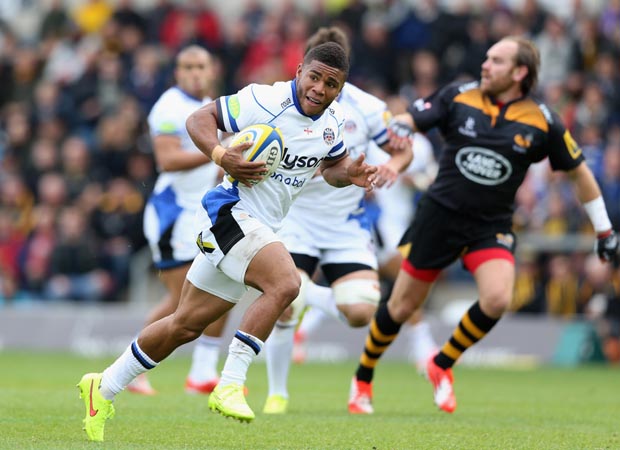 One of the enduring issues during Stuart Lancaster's tenure as England head coach has been a revolving door selection policy at centre, and on the wings. The shedding of seven players on Friday evening, when the Red Rose squad was cut from 46 to 39, highlighted that these are still problem areas for which Lancaster has yet to find definitive answers with the World Cup only five weeks away.
One of the enduring issues during Stuart Lancaster's tenure as England head coach has been a revolving door selection policy at centre, and on the wings. The shedding of seven players on Friday evening, when the Red Rose squad was cut from 46 to 39, highlighted that these are still problem areas for which Lancaster has yet to find definitive answers with the World Cup only five weeks away.
Kyle Eastmond's departure illustrated the ever-shifting midfield landscape. The Bath inside-centre lost out to his clubmate Sam Burgess, and the versatile Henry Slade, with the last two both uncapped. Eastmond was also ranked behind the ever dependable Brad Barritt, as well as Billy Twelvetrees and Luther Burrell – this despite Twelvetrees' form last season being up and down like a yo-yo.
The tactical conundrum that Lancaster faces as he contemplates his three warm-up games against France, home and away, and Ireland at Twickenham is that he has only one tried-and-tested centre pairing. That is the Burrell-Jonathan Joseph partnership which was employed throughout the Six Nations.
However, while they have played together five times – which is hardly record threatening – the only other combination with any longevity is the Twelvetrees-Burrell pairing from the 2014 Six Nations which Lancaster abandoned after the second Test defeat by New Zealand in Dunedin last summer.
For the record, none of England's other centre pairings have any Test match traction. Neither Burgess nor Slade have played at Test level. Barritt has not played alongside Joseph, and the Saracens 12 has played one Test with Twelvetrees (against Australia last autumn), and has barely featured alongside Burrell.
In the event of injury to Burrell or Joseph early in the World Cup script would leave England badly exposed, and having to bed-in a new partnership during the tournament. Planning-wise it is a pig's ear. This has its origins in Lancaster's discarding of Eastmond, who he considered good enough to play in four Tests last year, two on the tour of New Zealand, and two more against South Africa and New Zealand last autumn.
The midfield maze has been compounded also by his selection of Barritt for four Tests last autumn at outside-centre, rather than his best position at inside-centre. With Manu Tuilagi injured, Lancaster also missed a trick by failing to look at anyone else apart from Barritt and Burrell at 13 before his eventual elevation of Joseph for the last Six Nations. It is also surprising given Slade's recent promotion that he was not at least blooded off the bench against the likes of Italy or Scotland earlier this year.
On the wing the selection landscape is also foggy – and it became foggier still on Friday when Lancaster axed his two most powerful wingers, Semesa Rokoduguni and Marland Yarde, as well as his most prolific and experienced international try-scorer, Chris Ashton.
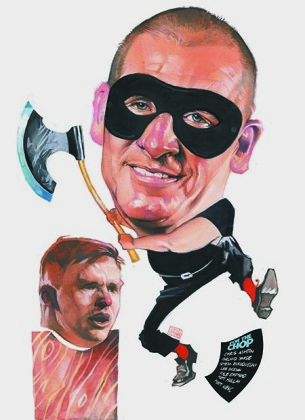 That left him with Jack Nowell, who is a rumbustious handful, but neither the biggest or fastest wing on the block, and two rapid raiders in Anthony Watson and Jonny May. However, none of them are in double figures in terms of caps, and they have one negative in common because so far they have all proved to be shaky under the high ball. Furthermore, when big units like George North, Alex Cuthbert, Israel Folau and Julian Savea come calling they do not pack the punch in defence that Yarde and Rokoduguni deliver.
That left him with Jack Nowell, who is a rumbustious handful, but neither the biggest or fastest wing on the block, and two rapid raiders in Anthony Watson and Jonny May. However, none of them are in double figures in terms of caps, and they have one negative in common because so far they have all proved to be shaky under the high ball. Furthermore, when big units like George North, Alex Cuthbert, Israel Folau and Julian Savea come calling they do not pack the punch in defence that Yarde and Rokoduguni deliver.
Yarde's slump after joining Harlequins last season has proved costly, but the two tries he scored against New Zealand on tour last summer left an indelible impression. The power and determination he showed against the All Blacks was that of a wing of true Test class, and it is a pity he was not given the chance to press his case in the warm-ups.
There are also serious questions about England's overall selection strategy going into the preparatory matches against the French and Irish.
If you believe England cannot afford to lose at Twickenham to either France or Ireland because of the solar plexus blow it would land to their World Cup hopes, damaging confidence before the tournament starts, it is obvious Lancaster has to select tantamount to his strongest line-ups in both home matches.
Then, if England managed to get far enough ahead of France after an hour at Twickenham on Saturday, he could experiment with his midfield by introducing Slade and Burgess. That desire to try out different combinations could be expanded a week later in Paris – where, should England lose, the fall-out would be much less damaging.
However, it emerged this week that Lancaster has more of a mix-and-match approach in mind. He indicated that, while he will pick “a very strong team” for the home game against France, he is determined to give as much match action to the players in his eventual 31 as possible. He said: “The priority has to be to win the game, but the priority as a coach is also to give everyone an opportunity, because you are going to need a 31-man squad to win a World Cup.”
No sooner had the seven-man cut been made than it was followed by a report that Lancaster is considering resting captain Chris Robshaw for the opener against the French, and getting the Northampton blindside, Tom Wood, to lead the side. This mooted reshuffle would also involve either James Haskell, or Wood's Saints club-mate Calum Clark – who has been on Lancaster's radar for years, but is uncapped – starting at openside.
The rationale, apparently, is that Lancaster wants to trial his options in the event that an injury deprives him of Robshaw's leadership.
Let's hope that this is based more on journalistic speculation than what is on the England head coach's white board, because with it comes a sense of strategic disorientation at the wrong time.
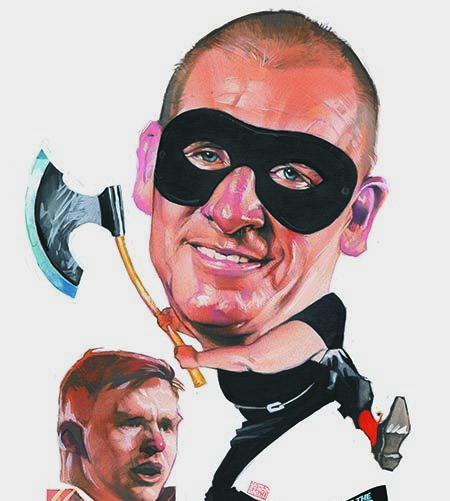


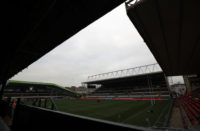
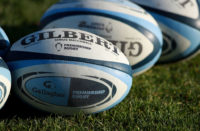























Pingback: เว็บหวย LSM99